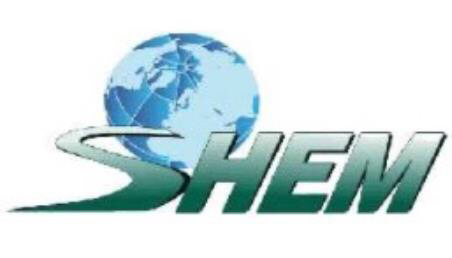Information
-
Audit Title
-
Client / Site
-
Conducted on
-
Prepared by
GENERAL WORK ENVIRONMENT
-
Is a documented, functioning Char-Force/housekeeping program in place?
-
Has housekeeping staff been trained on how to use the floor cleaning products? Has staff been trained on floor cleaning procedures? Have the cleaning practices been reviewed and feedback been provided to employees?
-
Are the housekeeping staff using floor polishing or wax products that provide adequate friction and do not create slip hazards when wet or dry?
-
Are all work areas kept clean, sanitary and orderly?
-
Are work surfaces kept dry or are means taken to ensure the floor surfaces are slip-resistant?
-
Are spill clean-up kits and equipment available?
-
Are all spilled materials or liquids cleaned up immediately using proper procedures?
-
Have the cleaning products been assessed to ensure they are effective against the typical contaminants in the work area?
-
Is the routine cleaning (e.g. - mopping, vacuuming) of areas scheduled at a time to minimize the slip, trip, and fall risk to other workers?
-
Does post have a cleaning log or schedule?
WALKWAYS/WORKING SURFACES
-
At the entryway to the building, has post considered providing a mat designed to remove moisture or debris off of a person’s footwear before the material is tracked into the facility? Is the installed mat maintained and replaced when damaged or worn?
-
If post’s entryways have flooring with hard and smooth surfaces such as tile, stone, or linoleum, does post provide umbrella bags/covers by the entryways to reduce the amount of water contacting the floor?
-
In the winter months, does post have a plan for minimizing slip and fall hazards when water or snow is tracked into the building?
-
Does the frequency for floor mat placement/replacement flex with current weather conditions to assure dry walking surfaces?
-
Are aisles and passageways kept clear of extraneous materials?
-
Are aisles and walkways appropriately marked?
-
Are slick surfaces covered with non-slip materials?
-
Are exterior walkways cleared and in good repair?
-
Are holes in floors or walking surfaces repaired, covered, or otherwise made safe?
-
Are gratings, non-skid mats or other non-slip materials used in wet locations (e.g. – cafeteria kitchen, water fountain)?
-
Is there safe clearance in aisles where mechanical handling equipment is operating?
-
Are materials and equipment stored so that objects will not interfere with the walkway?
-
Are aisles or walkways that pass near moving or operating machinery, welding or similar operations, arranged so that workers will not be subjected to potential hazards?
-
Are standard guardrails provided wherever aisles or walkway surfaces are elevated more than 30 in. (76.2 cm) above any adjacent floor or the ground?
-
Are platforms/bridges provided for horizontal rooftop utility runs, mechanical room HVAC condensate discharge piping, and similar type hazards?
-
Is carpeting walking surface secure and free of defects (e.g. - rippled, loose, or frayed)?
-
Are walkways free of electrical and communications cords?
-
If cords are in a walkway, can the cords be re-routed (e.g. – overhead), can an additional outlet be installed or another outlet be used, can the cords be taped down, cabled tied, secured to the base molding, or other-wise covered and secured?
-
Extension cords and electrical equipment cords (e.g. – computer, projector) often pose trip hazards where they cross walkways. Can these cords be re-routed or bundled and secured (e.g. – cable ties)? Where equipment is permanently situated, can permanent wiring and outlets be installed?
-
Does every employee know that they need to take immediate action if they discover a spill?
-
Is floor care equipment, such as mops and mop buckets, readily available and accessible?
-
Are portable trip hazard floor signs available and used?
-
Are portable wet floor signs available and used?
-
Are portable wet floor signs removed when the floor is dry?
-
Are there areas at post where surface contamination (such as water, oil, or sawdust) regularly contacts the floor? If so, has post taken steps to reduce or eliminate this contamination from reaching the floor?
-
Are there some floor surfaces at post where there is a high risk of a slip, trip, or fall? What is being done to reduce slips, trips and falls in these areas? For example, some high risk areas may include entry areas, transition areas, stairs, as well as areas near sinks, ice machines, walk-in freezers, and water fountains.
-
If the walking surface in a work area needs to be replaced, has post explored types of a floor surfaces that will minimize the risk of slip, trip, and fall injuries based on the activities that occur in those areas?
-
In planning a new floor, has post considered floor material surface friction data when available from prospective suppliers? Has post requested test data from suppliers before purchasing?
-
If a new floor is not feasible, have other options including floor treatments, abrading floors, thermal floor treatment, floor mats or options to increase friction been considered for high risk areas?
-
If post is using mats, are they in good condition with the beveled edges lying flat, and are they prevented from sliding on the floor?
-
Have transition areas been evaluated? Are transition areas adequately protected? Is the lighting good in transition areas?
-
Are floors properly designed to allow for good drainage?
-
Are floor drains (e.g. – especially lavatories) unobstructed allowing adequate drainage?
STAIRS AND STAIRWAYS
-
Are there standard stair rails or handrails on all stairways having four or more risers?
-
Are all stairways at least 22 in. (55.9 cm) wide?
-
Are the dimensions of stairway step risers and runs uniform from top to bottom? <br>The International Building Code (IBC) requires that step riser heights be a maximum of 7 inches (17.8 cm) and no less than 4 inches (10.2 cm); and, a minimum step run or tread depth of 11 inches (27.9 cm). The IBC requires dimensional uniformity of the steps over the length of the stairway.<br>
-
Are steps on stairs designed or provided with a surface that renders them slip resistant?
-
Are stairway handrails located between 30 and 34 inches (76.2 and 86.4 cm) above the leading edge (a.k.a. – nose) of stair treads?
-
Do stairway handrails have at least a 3 inches (7.6 cm) of clearance between the handrails and the wall or surface they are mounted on?
-
Where doors or gates open directly on a stairway, is there a platform provided so the swing of the door does not reduce the width of the platform to less than 21 inches (53.3 cm)?
-
Where stairs exit directly into any area where vehicles may be operated, are adequate barriers and warnings provided to prevent workers from stepping into the path of traffic?
-
Are stairway step surfaces and stair nosing free from defects (e.g. – broken steps, cracks, loose components)?
-
Do stairway steps have surfaces that render them slip resistant?
-
Has post considered applying anti-slip materials to the edges of the steps to increase friction?
-
Do stairways have sufficient lighting?
-
Has post staff been trained to use the handrails and to carry materials safely on stairs when this is necessary?
-
What does post do if an individual notices someone using the stairway in an unsafe manner, such as carrying too much down a set of stairs or taking more than one step at a time?
-
Has post considering painting the edges of the steps to increase visibility?
-
Are stair tread components intact and secure or do parts need repair or replacement?
FOOTWEAR
-
Does post have a policy defining appropriate footwear? If so, is staff held accountable for following the policy?
-
Has post trained employees and raised awareness, through newsletters or bulletins, on the importance of wearing proper footwear as a way to reduce risk of slip, trip, and fall injuries? Has staff been trained on when to replace footwear?
-
Does post conduct footwear inspections of maintenance staff? What does post do if an employee is found not complying with policy?
-
Is specialty footwear needed (high-traction overshoes or cleats) to provide traction on ice and snow appropriate or boots designed for a specific task for those working outdoors?
-
Has post considered options for supplying FSN workers with slip-resistant footwear?
PARKING LOT AND GROUNDS
-
Has post assessed the parking lot(s) and grounds for slip, trip, and fall hazards?
-
Are edges of curbs and tire stops sufficiently visible?
-
Are parking lots well lit, especially during the winter months?
-
Does post have an inclement weather plan/procedure? Is this plan reviewed in the fall prior to the arrival of cold weather to ensure procurement of consumables and equipment, key staff members understand their responsibilities, such as who will clear key walkways or apply de-icer salts and sand?
-
Are inclement weather supplies readily staged and available during winter weather?
-
Do sidewalks & ramps show signs of surface upheaval or unevenness?
-
If trees are growing near sidewalks, has post considered removing or replanting these trees to avoid having the tree roots cause future damage to the sidewalk?
-
Have the sidewalks and parking areas been assessed for segments that are partially raised because of tree root growth or other damage? If raised sidewalk sections are found, are these areas mechanically ground down or otherwise repaired?
-
Does post have wheel/tire stops in locations where they are not serving the intended purpose? Do the wheel/tire stops stick out past the wheels of a parked vehicle creating a trip hazard for pedestrians walking between cars?
-
Are sidewalks & ramps free of defects (e.g. – cracks, breaks, holes, spalling)?
ELEVATED SURFACES
-
Are signs posted, when appropriate, showing the elevated surface load capacity?
-
Are surfaces higher than 30 in. (76.2 cm) above the floor or working surface provided with standard guardrails? Note: loading docks are exempted.
-
Are all elevated surfaces (beneath which people or machinery could be exposed to falling objects) provided with standard 4-in. (10.2-cm) toe-boards?
-
Is a permanent means of access/egress provided to elevated storage and work surfaces?
-
Are materials on elevated surfaces piled, stacked, or racked in a manner to prevent them from tipping, falling, collapsing, rolling or spreading?
-
Are surfaces higher than 30 in. (76.2 cm) above the floor provided with standard guardrails?
-
Is a permanent means of access/egress provided to elevated storage and work surfaces?
-
Is required headroom provided where necessary?
TRAINING
-
Has staff been trained on rules such as “no running” and “look where you are going and go where you are looking?”
-
Has staff been trained on how to carry a box slightly off to the side of the body to maintain better visibility?
-
Has staff been trained on the benefits changing gait and to modify foot angle when walking on slippery surfaces?
-
Are facility maintenance employees properly trained on use of intended snow removal equipment (e.g. - skid-steer loader) to prevent property damage at post?
EXTRA INFORMATION
-
Have all safety issues been addressed?
-
Auditor name
-
Auditor signature











